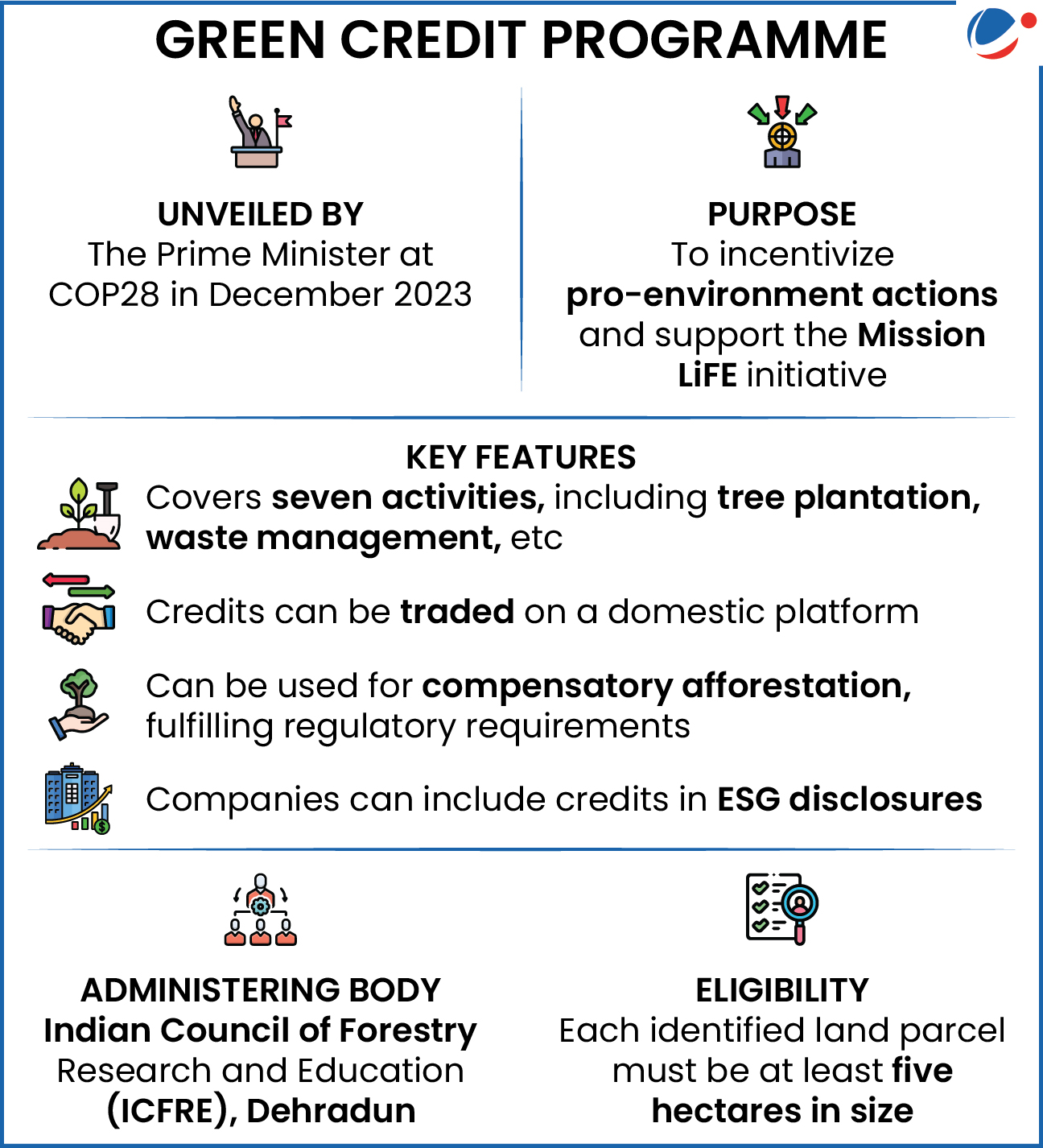The GCP is a mechanism to encourage voluntary plantation, resulting in award of Green Credits and build an inventory of degraded land which can be utilised for Afforestation programmes.
- Despite its ambitious goals, the programme has faced legal scrutiny and environmental criticisms.

Criticism & Controversies of Green Credit Programme
- Lack of Legal Foundation: The Environment Protection Act, 1986 (under which the Rules were notified) does not provide a legal framework for tradable green credits for compensatory afforestation.
- Environmental Criticisms
- Incentivizes forest diversion: Companies can buy credits instead of restoring forests, weakening environmental safeguards.
- Degraded lands at risk: The GCP promotes plantations on open forests, scrublands, and wastelands, which already provide unique ecological benefits.
- No real addition to forest cover: Unlike compensatory afforestation (which requires converting non-forest land into forests), GCP allows existing degraded forest land to be used, meaning no net gain in forest area.
- It contradicts the Van (Sanrakshan Evam Samvardhan) Adhiniyam, 2023, which mandates land-for-land compensatory afforestation.
- Evaluation and Long-term Sustainability: The GCP methodology lacks clear criteria for evaluating plantation success, especially tree survivability, allowing failed plantations to still earn credits.



